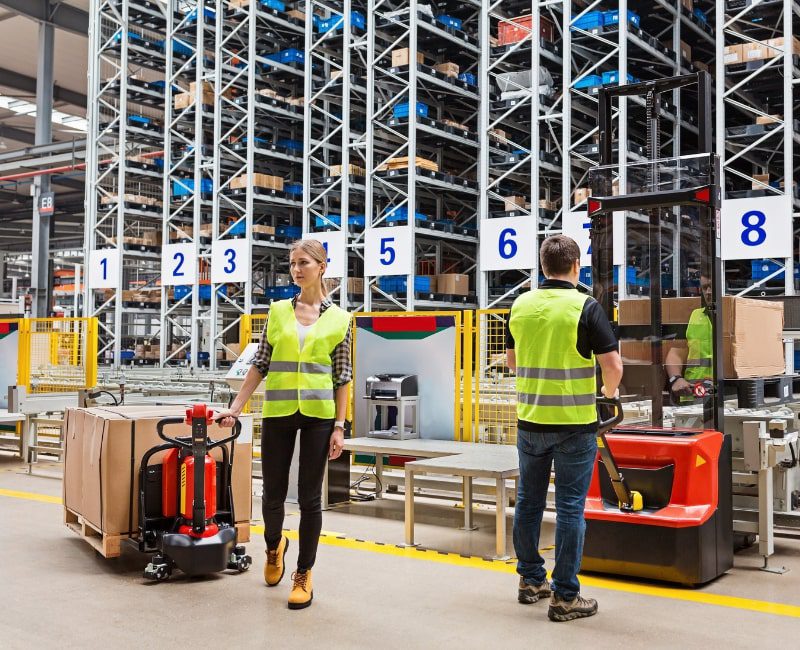With 63% of brands planning to add at least one new sales channel in 2025, the pressure to scale fulfillment is intensifying. That’s a lot of new orders, a lot of new inventory, and a lot of potential for things to go wrong. Many businesses chase growth, only to find their fulfillment processes buckling under the strain.
Scaling fulfillment isn’t simply about adding warehouse space or hiring more hands. It’s about navigating a complex web of challenges that many businesses don’t anticipate. You’ll find that the true cost of scaling often hides in the details.
Let us show you what many scaling businesses learn the hard way: unexpected fees, tech malfunctions, and many other issues can quickly derail even the most ambitious growth plans.
The Hidden Costs of Rapid Growth
Rapid growth often reveals unforeseen expenses that can significantly impact a business’s bottom line. Understanding these costs is crucial for sustainable scaling.
The Cost of Volume Discounts
Volume discounts can mask underlying financial burdens.
Unexpected Storage Fees: Increased order volume often leads to higher inventory levels. This can result in substantial and unanticipated storage costs, particularly if demand forecasts are inaccurate.
Increased Error Rates: As order volume increases, so does the potential for errors. This includes incorrect shipments, damaged goods, and mislabeled products, all of which contribute to increased operational costs.
Diminishing Returns on Labor: Simply adding more labor may not translate to proportional increases in efficiency. Without optimized processes and technology, the cost per unit processed can rise as volume increases.
Tech Integration Challenges
Scaling operations often exposes the limitations of existing technology infrastructure.
Legacy Systems and Scalability: Older systems may struggle to handle increased data and transaction volumes, leading to performance bottlenecks and system failures. This can cause delays and negatively impact order fulfillment.
Data Silos and Inefficiency: Disparate systems that do not communicate effectively create data silos, hindering real-time visibility and decision-making. This lack of integration leads to inefficiencies and increased operational complexity.
The Cost of Rushed Integrations: Implementing new technologies without proper planning and testing can lead to costly errors and disruptions. Quick fixes often create long-term problems, increasing maintenance costs and reducing system reliability.
The “People Problem”
Scaling operations places significant demands on the workforce.
Training and Onboarding Challenges: Rapid expansion requires onboarding and training new employees quickly. Inadequate training can lead to errors and decreased productivity, impacting overall efficiency.
Maintaining Quality Control: Maintaining consistent quality standards becomes more challenging as the workforce expands. Effective quality control measures are essential to ensure customer satisfaction.
Employee Burnout and Turnover: Increased workload and pressure can lead to employee burnout and higher turnover rates. High turnover increases recruitment and training costs and disrupts operational continuity.
Inventory Management: Beyond Basic Stock Counts
Inventory management is more than just counting boxes; it’s about anticipating demand and optimizing flow. Effective inventory management is the backbone of successful scaling.

Demand Forecasting Realities
Forecasting demand accurately is a critical, yet often challenging, aspect of scaling.
Seasonality and Trends: Consumer behavior changes with seasons and evolving trends. Failing to account for these shifts leads to overstocking or stockouts.
The Bullwhip Effect: Small fluctuations in demand at the retail level can amplify into significant changes further up the supply chain. This effect creates instability and excess inventory.
Marketing Campaigns: Promotional activities and marketing campaigns directly influence demand. Without an accurate prediction of these increases, inventory will not be prepared.
Strategic Warehouse Layout
The physical layout of your warehouse plays a crucial role in efficiency.
Optimizing Pick and Pack Routes: Efficiently designed layouts minimize travel time for warehouse staff. This speeds up order fulfillment and reduces labor costs.
Adapting to Product Variations: Warehouses should be designed to accommodate diverse product sizes and types. Flexible storage solutions are essential for handling varied inventory.
Considering Future Expansion: Planning for future growth ensures that your warehouse can adapt to increased inventory volumes. Forward-thinking layouts avoid costly redesigns.
Optimizing Fulfillment with the Right Technology
Throwing tech at a problem doesn’t guarantee a solution; strategic implementation is key. Technology should enhance, not complicate, your scaling efforts.
Choosing the Right WMS
A Warehouse Management System, or WMS, is the backbone of modern fulfillment, and choosing the right one is essential.
Customization vs. Off-the-Shelf: Off-the-shelf systems offer quick deployment, while customized solutions cater to specific needs. Weigh the trade-offs carefully.
Cloud-Based vs. On-Premise: Cloud-based systems offer flexibility and scalability, while on-premise systems provide greater control. Evaluate your long-term needs.
Integration Capabilities: Ensure your WMS integrates seamlessly with existing systems. This avoids data silos and streamlines operations.
Automation Integration
Automation can significantly improve efficiency, but it requires careful planning.
ROI Considerations: Calculate the return on investment before implementing automation. Make sure the benefits justify the costs.
Phased Implementation Strategies: Implement automation in phases to minimize disruption. This allows for adjustments and optimization.
Identifying Key Points: Focus on automating repetitive tasks and bottlenecks. This maximizes the impact of automation.
Data Analytics and Real-Time Visibility
Data is your most valuable asset. Use it to drive informed decisions.
Actionable Insights: Data should provide clear, actionable insights. This allows for quick adjustments and improvements.
Predictive Analytics: Use predictive analytics to anticipate future demand and optimize inventory levels. This minimizes stockouts and overstocking.
Reporting: Comprehensive reporting provides visibility into key performance indicators. This allows for continuous monitoring and optimization.
Customer Experience while Scaling Operations
Scaling should enhance, not diminish, the customer experience. Keeping customers happy is paramount during periods of rapid expansion. Here are some things to keep in mind:
Maintaining Service Levels
As you scale, maintaining consistent service quality is crucial.
Order Accuracy and Speed: Customers expect their orders to be accurate and delivered promptly. Scaling shouldn’t compromise these essential aspects.
Handling Returns and Exchanges: A smooth returns process builds customer trust. Efficiently managing returns and exchanges is vital.
Proactive Communication: Keeping customers informed about their order status is imperative. Proactive updates enhance the overall experience.
Personalized Fulfillment
Personalization can differentiate your brand in a competitive market.
Custom Packaging and Branding: Custom packaging creates a memorable unboxing experience. Branded materials reinforce your brand identity.
Subscription Box Management: Subscription services require precise and timely fulfillment. Managing these boxes effectively is essential for customer retention.
Handling Specialized Requests: Offering flexibility for unique customer needs builds loyalty. Accommodating special requests sets you apart.
Scaling Customer Support
Increased order volume means increased customer inquiries.
Fulfillment and Support Integration: Streamlining communication between support and fulfillment teams improves resolution times. This creates a seamless customer journey.
Managing Increased Volume: Implementing efficient support systems and tools is essential. This ensures timely responses and customer satisfaction.
How to Build a Resilient Supply Chain
A chain is only as strong as its weakest link; building a resilient supply chain means preparing for the unexpected. Robust supply chains are essential for sustained growth and stability.

Diversifying Carrier Networks
Relying on a single carrier can be risky when scaling your supply chain.
Mitigating Shipping Delays: Spreading shipments across multiple carriers reduces the impact of delays. This ensures orders reach customers on time.
Cost Optimization: Comparing rates from different carriers allows for cost-effective shipping. This optimizes transportation expenses.
Planning for Disruptions: Having backup carriers in place minimizes disruptions during peak seasons or unexpected events. This keeps operations running smoothly.
Contingency Planning
Unexpected events can derail even the best-laid plans.
Disaster Recovery Strategies: Developing strategies for natural disasters or system failures minimizes downtime and ensures business continuity.
Handling Spikes in Demand: Preparing for sudden increases in order volume prevents stockouts and delays. This maintains customer satisfaction.
Creating Flexible Solutions: Implementing adaptable processes and systems allows for quick adjustments. This enables responsiveness to changing circumstances.
The Value of 3PL Partnership
A 3PL partner isn’t just an extra set of hands; they’re a strategic asset that can significantly enhance your supply chain resilience. 3PLs that have already navigated many of these challenges provide a valuable resource.
Scaling fulfillment involves intricate logistics, intricate software, and a large workforce. Experienced 3PLs possess the knowledge to streamline these processes. They understand the nuances of inventory management, transportation, and technology implementation.
Access to Established Networks: 3PLs have established relationships with carriers, suppliers, and technology providers. This network provides access to better rates, faster transit times, and cutting-edge solutions. They’ve already done the work of vetting and building relationships.
Scalability and Flexibility: A strong 3PL can adapt to your fluctuating needs. They can quickly scale up or down based on demand, allowing you to focus on core business activities. This flexibility is invaluable during periods of rapid growth.
Technology and Infrastructure: Investing in advanced technology and warehouse infrastructure can be costly. 3PLs have already made these investments. This provides you with access to sophisticated systems without the upfront expense.
Risk Mitigation: 3PLs help mitigate risks associated with supply chain disruptions. They have contingency plans in place to handle unexpected events, such as natural disasters or carrier delays. This reduces the impact on your business.
Achieving Scalable and Sustainable Fulfillment Operations
Scaling fulfillment isn’t just about getting bigger; it’s about getting smarter. It requires careful planning, strategic decision-making, and a deep understanding of the hidden challenges.
A 3PL partner with experience navigating these challenges can bring significant value to your operation. They offer expertise, resources, and a flexible approach to help you scale efficiently and effectively.
At Hanzo Logistics, we understand the complexities of scaling and can provide tailored solutions to meet your specific needs. From expert fulfillment services to strategic technology implementation, we’re here to help you navigate the challenges and achieve your growth goals.



